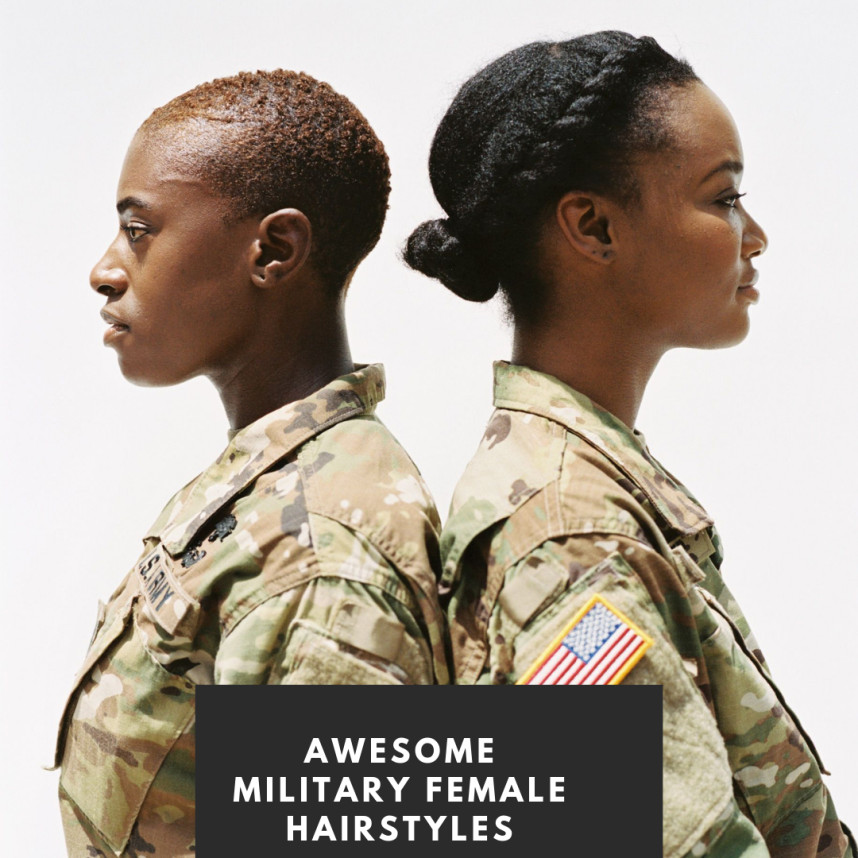Table Of Content

Hair shall be no longer than four inches and may not touch the ears, collar, extend below eyebrows when headgear is removed, show under front edge of headgear, or interfere with properly wearing military headgear. The bulk of the hair shall not exceed approximately two inches. Hair coloring must look natural and complement the individual. Faddish styles and outrageous multicolored hair are not authorized. The unique quality and texture of curled, kinked, waved, and straight hair are recognized, and in some cases the ¾ inch taper at the back of the next may be difficult to attain.
Naval Education and Training Command

The first step in the process to host a NJROTC unit is for a school official to complete an application. Host School Applications are available on-line and the link to download the document is provided below. If you are a retired member of the Navy, Marine Corps, or Coast Guard, Gray-area Reservist, or medically retired, officer or enlisted and are interested in teaching a NJROTC class, click here for more information. Sea Cadets are young men and women aged 10 to 18. Coast Guard, and our Cadets train on naval bases and other military installations. Unfortunately, because the Navy wants its sailors to be clean-shaven, beards are not allowed.
What subjects are included in the curriculum?
For women, the rules now allow very short hair styles to include showing the scalp. Many of the changes came from Sailor feedback during uniform and grooming standards focus and working groups held in the fleet. According to Carroll, some came up during Task Force One Navy listening sessions held in 2020 and 21. The tips of the nails may be round to align with the contour of the fingertip. Buffed nails or clear coat nail polish authorized.
These are the rules NATO allies have about growing beards - We Are The Mighty
These are the rules NATO allies have about growing beards.
Posted: Tue, 23 May 2023 07:00:00 GMT [source]
FIND AN NJROTC UNIT
Adjustments for class length other than 40-minute periods, as well as staggered, rotating or modular (block) schedules, are made at the local school level. The Navy has unveiled a wave of uniform and grooming updates — including multiple hairstyle updates for men and women, and guidance regarding earrings, high heels and smartwatches. Examples of accessories that are not authorized include headbands, scrunchies, combs, claws and butterfly clips. This list is not to be considered all inclusive. While our cadets gain an appreciation for the sea services and military life, there is no requirement to join the military.
Other Grooming Standards
Our culture stresses self discipline, service to others, accountability, and patriotism. At young ages, our cadets are given leadership opportunities by staffing summer training events, planning unit drill sessions, and teaching others. Servicemembers Civil Relief Act (SCRA) is a federal law that provides protections for military members as they enter active duty. In order to have your SCRA case reviewed by the Department of Justice (DoJ), you must first seek the assistance of your local military legal assistance office. If that office cannot resolve the complaint, it may choose to refer the complaint to the DoJ for review and a determination of whether DoJ action is appropriate. Female sailors are allowed to wear a ponytail, provided they meet the mandatory criteria in regards to length and style of the ponytail.
Naval Academy Haircut Standards – For Males
Body piercings are also not allowed in places under U.S. Military jurisdiction or participating in organized military recreational activities. Earrings have two different guidelines, one for men and one for women.
Navy Updates Hairstyles and Policies in Extensive Uniform Update
Rings may consist of natural metals or fabricated materials (i.e. plastic, wood, silicone) and may be gold, silver, copper, grey, tan, brown, black, white, or light pink in color. Only one ring per hand is authorized, plus a wedding/engagement ring set. Double stacking wedding rings with military academy/educational institution rings is authorized on one hand.
Navy Hair Regulations
In addition to hairstyles, the new rules make a variety of smaller but notable changes to uniform rules. Likewise, the NAVADMIN also stipulates guidelines for prescription glasses and sunglasses, noting that frames must be silver, gray, black, navy blue, brown or gold. It’s also OK if they are translucent or transparent, or have small logos. Layered hairstyles are authorized provided each hair’s length is generally the same length.
COLORADO
French and american manicures (white and off-white tips with neutral base color ONLY) are authorized. Relaxed Hair Requirement with Dinner Dress Uniforms. Female Sailors are authorized to wear their hair below the lower edge of the collar of the blouse, jacket, or coat of the dinner dress uniform being worn. All other navy grooming requirements will remain in effect per the guidance promulgated by this instruction. During group command/unit physical training, Commanding Officers are authorized to standardize unit policy for the relaxation of Female hair Grooming Standards with regard to having hair secured to head (e.g., ponytails). Hair restraining devices, if worn, will be consistent with the current hair color.
Sea Cadets wear uniforms, work as teams in a disciplined environment, and adhere to our core values of honor, respect, commitment, and service. Click here for additional standards on specific types of female hairstyles and how the Navy requires you to maintain them. Layered hairstyles are authorized if the layers are presented smoothly. For this reason, along with the long-standing tradition that U.S. Military members are “clean-cut,” we examine Navy grooming standards in this article.
Many former cadets enlist, and dozens attend service academies or ROTC. Cadets who complete our “recruit training” are well prepared for the rigors of boot camp or officer indoctrination. This website is intended for active duty, reserve component, and retired military members, their family members, and others eligible for legal assistance through the military. All information contained within the website is for educational and informational purposes.
No portion of the bulk of the hair as measured from the scalp will exceed two inches. Applications received are kept on file and will be given every consideration when further expansion of the NJROTC program is planned by the Navy. Official offers to establish a NJROTC unit will be made to the school superintendent via letter containing a contract for establishment of the unit that is signed by both parties for the educational partnership. High school officials desiring the opportunity to host a NJROTC unit are invited to submit an application at any time.
Varying hairstyles, including flat top, bald/shaved heads, high and tight, hi-top and low-top fades, afros, and similar styles are examples of authorized hairstyles. Plaited, braided, locks, twists, faux hawk hairstyles or hairstyles similar in appearance are examples of unauthorized hairstyles in uniform or in a duty status. Sideburns worn will be neatly trimmed and tailored in the same manner as the haircut.












